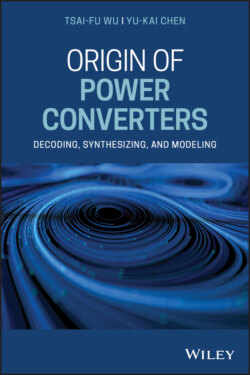Читать книгу Origin of Power Converters - Tsai-Fu Wu - Страница 24
1.6.2 Part II: Modeling and Applications
ОглавлениеPart II includes Chapters 12–15. They first review conventional two‐port network theory and state‐space averaged (SSA) modeling approach, from which systematical modeling approaches based on the graft switch technique, the converter layer scheme, and some fundamental circuit theories are presented. Basically, they model the PWM converters out of the original converter in two‐port networks. Additionally, two application examples are presented to illustrate the discussed modeling approaches.
Chapter 12 first reviews the two‐port network theory and discusses the SSA modeling of PWM converters with the converter layer technique. It includes the modeling of the original converter, two typical feedback configurations, and possible extension to quasi‐resonant converters.
Chapter 13 presents modeling of PWM converters with the graft switch technique, which includes modeling of the buck family, buck, buck‐boost and Zeta converters, and boost family, boost, boost‐buck, and sepic converters; out of the basic converter units; and representations of small‐signal transfer characteristics in terms of two‐port network circuits.
Chapters 14 and 15 present two application examples based on the proposed modeling approaches. One is presenting design and modeling of an isolated single‐stage converter for power factor correction and fast regulation; the other is to develop another single‐stage converter for achieving high power factor and fast regulation with either peak current control or robust control. Simulated and experimental results have been presented to verify the feasibility of the proposed approaches.
